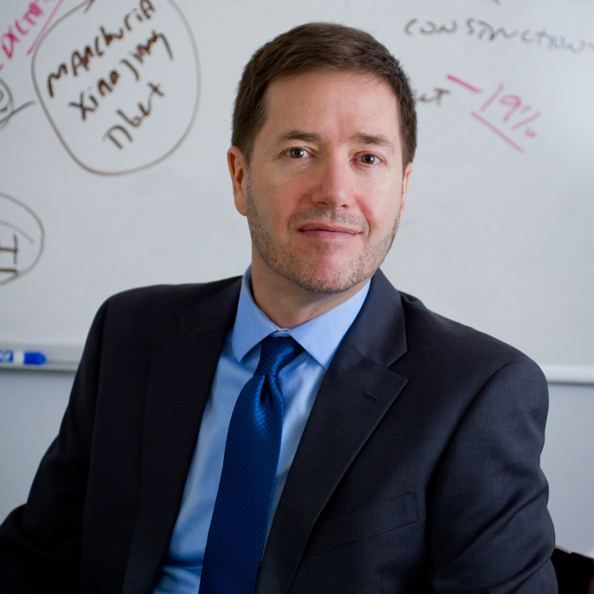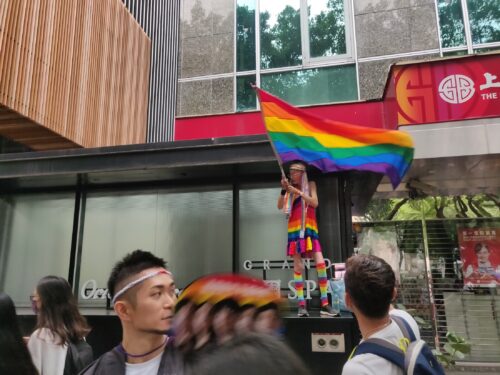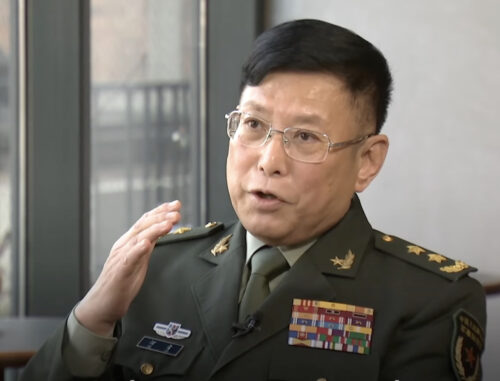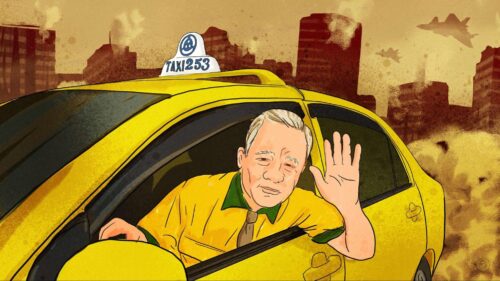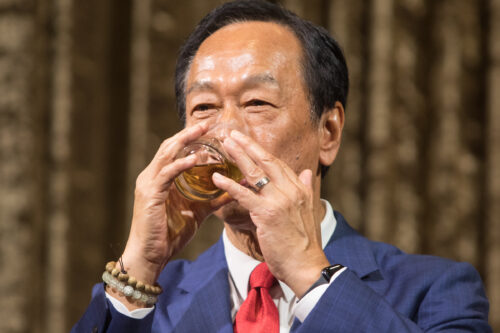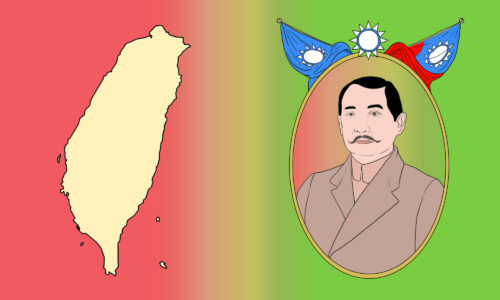Transitional justice and the ‘voyage’ of democracy in Taiwan
Now that Tsai Ing-wen has won a second term as Taiwan’s president, it’s time to expect results on one of her most important pledges: Delivering “transitional justice” to Taiwan's democracy.

How does one build a functioning democracy when the nation has been wracked for generations by state-sponsored violence, enforced forgetting, and institutionalized injustice? If the government has historically been a source of terror, and has forbidden citizens from seeking the truth, how can people ever trust their leaders?
Following her election to the presidency in Taiwan in 2016, Tsai Ing-wen’s (蔡英文 Cài Yīngwén) answer to that question was the Transitional Justice Commission (TJC). Founded in May 2018, the TJC was meant to uncover atrocities committed by Chiang Kai-shek’s (蒋介石 Jiǎng Jièshí) Kuomintang party (KMT) during a period of martial law, from 1949 to 1987, known as the “White Terror.”
The TJC was charged with “the opening of political archives; removing symbols of authoritarianism…restoring historical truths; promoting social reconciliation…[and addressing] improper party property and other matters of transitional justice,” according to its website. As the vague phrase “and other matters” indicates, the TJC was given wide investigational powers, but the larger purpose was clear: “To restore historical truths” as a first step toward wider conversations about how post-atrocity Taiwan might flourish.
The concept of “transitional justice”
Following the collapse of the apartheid regime in South Africa, President Nelson Mandela launched a Truth and Reconciliation Commission (TRC) in 1995. Meant to serve as a clearing house for testimonies from both victims and perpetrators, the TRC was envisioned as a mechanism for opening up speech. Instead of racially-driven silence and fear, the TRC was supposed to help South Africa build a new culture of communication and understanding. Instead of retribution, the TRC was meant to facilitate reconciliation.
But uncovering days of terror, naming the perpetrators, uncovering the mechanisms of violence, and asking victims to share their pain would be no easy task. And so, as Priscilla Hayner observed in her foundational study, the process entailed unspeakable truths (she wrote a book by that title). Nonetheless, the TRC model was soon replicated around the globe. In fact, versions of TRCs now operate in more than 40 nations, according to the International Center for Transitional Justice, where they are addressing systematic human rights abuses in such places as Chile, East Timor, Guatemala, Nepal, Peru, and Sierra Leone.
The Taiwan model
Steeped in this international context, and seeking to stem the tides of anger and recrimination that have long haunted Taiwan, Tsai has been waging a campaign for forgiveness, understanding, and compassion. As she said in her 2016 inaugural address, “We must find a way to face the past together.” To put that ideal into practice, Tsai’s version of a Truth and Reconciliation Commission is meant to lead the process of “transitional justice.” “We will discover the truth,” she said at her first inauguration, “heal wounds, and clarify responsibilities.”
“Clarifying responsibilities,” in this case, means looking backwards to try to uncover long-repressed atrocities, literally opening the lid on tortured pasts. Rather than seeking to punish the guilty, however, Tsai’s version of “transitional justice” means, as she said on her Facebook page, trying to use this hard-won historical evidence “to heal social wounds, to defuse confrontation, and to consolidate Taiwan’s democratic system.” Paraphrasing these comments, the Taipei Times describes how the nation is striving “to heal society’s scars, resolve antagonisms, and strengthen Taiwan’s democracy.” Heal, resolve, strengthen — these are the touchstones of Taiwan’s version of transitional justice.
Yet building a new democracy while uncovering repressed pasts is no easy task — the process is fraught with confusion, contradiction, and conflict. Along with a couple of colleagues, I decided to try to make sense of how transitional justice is unfolding in Taiwan by interviewing Hung-Ling Yeh, the commissioner of the TJC. Our interview pointed to a few key aspects of transitional justice in Taiwan.
Process, not outcome
When we asked the commissioner to define transitional justice, she said, “Transitional justice is not a thing you achieve, but a process you pursue, especially in new democracies trying to deal with the terrible damage caused by authoritarian regimes — so transitional justice is a mechanism for dealing with damage while also moving forward. Most importantly, transitional justice creates spaces for discussing questions about compensating victims, exonerating the innocent, and restoring the truth of our national history.”
Yeh was clear that the TJC exists not to make decisions, but to provide the historical information needed to pursue informed political choices. “The most important role for the TJC,” she said, “is not trying to control the debate about what to do; instead, the goal of our work is to restore the historical facts and to reveal them to the public so that the people can then make informed political choices.”
Transitional justice, then, is not about desired outcomes, but about building open and fair deliberative processes infused with fact-based evidence.
Is the “truth” out there?
While we were doing our field work in Taiwan, Tsai led a mass-exoneration ceremony for people who had been falsely accused of committing political crimes during the White Terror. These mass exonerations seem like useful symbolic gestures, showy demonstrations of a new regime highlighting the errors of the old, but when we interviewed one of the exonerees, he said, “I don’t care about exoneration, I know I am innocent. I want the truth.”
To follow up on this notion of lost or hidden truth, we asked the commissioner, “As you get into the historical records, are you finding lost truths or are you just finding bad bureaucratic bungling and political confusion?”
The reply: “The hard realization is that there probably is no truth.” Instead, she said the TJC digs through millions of pages of archival material, most of it unorganized, some of it damaged, virtually all of it produced by bureaucrats not so much trying to hide the “truth” as to cover their tracks via piles of forms, reports, memos, letters, orders, bills, and so on. The historical record does not hide definitive truths, it is but an accumulation of fragmentary clues.
Trauma everywhere, and perhaps forgiveness
One of Yeh’s more startling realizations was that suffering, pain, and trauma are nearly universal inheritances in Taiwan. As she said, “Probably everyone either was or knew an informer or whistleblower. Everyone suffered under this massive surveillance system — everybody knew there were ears in the next room.”
The TJC has been finding that virtually everyone in Taiwan was either a victim of the White Terror, or an agent within the regime, or a witness to some part of the damage. “We have found records of neighbors reporting on neighbors,” she said, and of “students informing on their classmates, and even the nannies of kids tipping off the KMT about what the children were doing.” Because the threat of the White Terror was so universal, she said, “there was a culture of fear and distrust, and it seems to have impacted everyone.”
This realization does not point toward anger and recrimination, however. As Yeh noted, “What has really surprised us is that the victims say they can understand” the actions of perpetrators, “because those informers were probably threatened or pressured by the government. That culture of fear forced people to make terrible choices. So what we are beginning to realize is that Taiwan during the White Terror was a lot like East Germany under the Communists: The networks of spying and lying and informing were so vast that probably one or two out of every four Taiwanese were informers in some way.”
This realization points to a humbling conclusion: “The question of who is a victim and who is a perpetrator becomes blurred under such conditions,” she said, meaning retreating into anger is useless — the only way forward is through honest dialogue, practicing better communication to heal old wounds.
Taiwan as a beacon of democracy
We ended our interview by asking about Taiwan’s relationship with China, which continues to threaten the island with forced unification. The commissioner answered by putting Taiwan into an international context: “Remember that as we do our work here, we absorb the experiences from East Germany, South Africa, and various Latin American nations… Just as we learned from others, so we hope that we can feed our lessons back to Asian countries and other areas of the world. We very much hope that our work feeds democracy, both here in Taiwan and elsewhere.”
Transitional justice in Taiwan, then, is just one part of the larger, global community of postcolonial entities building democracy. As Yeh said, “The entire history of Taiwan has been full of uncertainty — ours is an uncertain voyage. We hope that by learning lessons from our work, we can help Taiwan to prosper. And, really, we’re talking here about building a map of democracy and trust in the rule of law — those are our great tools during this voyage into the future.”
Now that Tsai has won reelection, it is time for that “voyage” to begin producing results. Indigenous land claims need to be resolved, KMT iconography needs to be removed out of public places and preserved in historical spaces, and all White Terror archives need to be opened to the public. Perhaps most importantly, the TJC needs to facilitate wider public deliberation about what “reconciliation” might look like and how it will enhance Taiwan’s fragile democracy.

